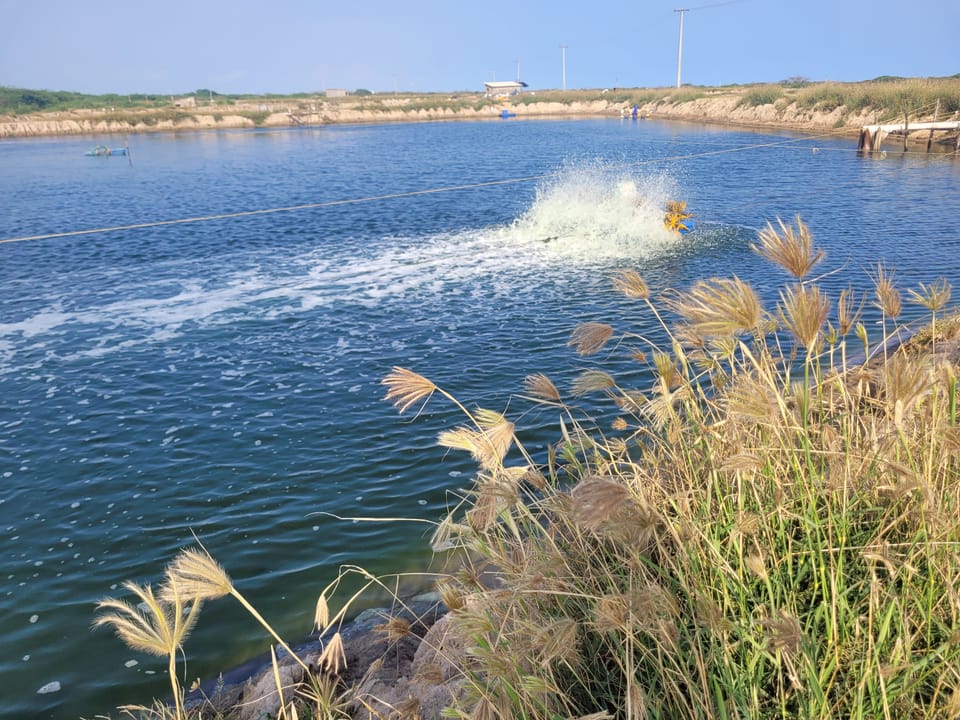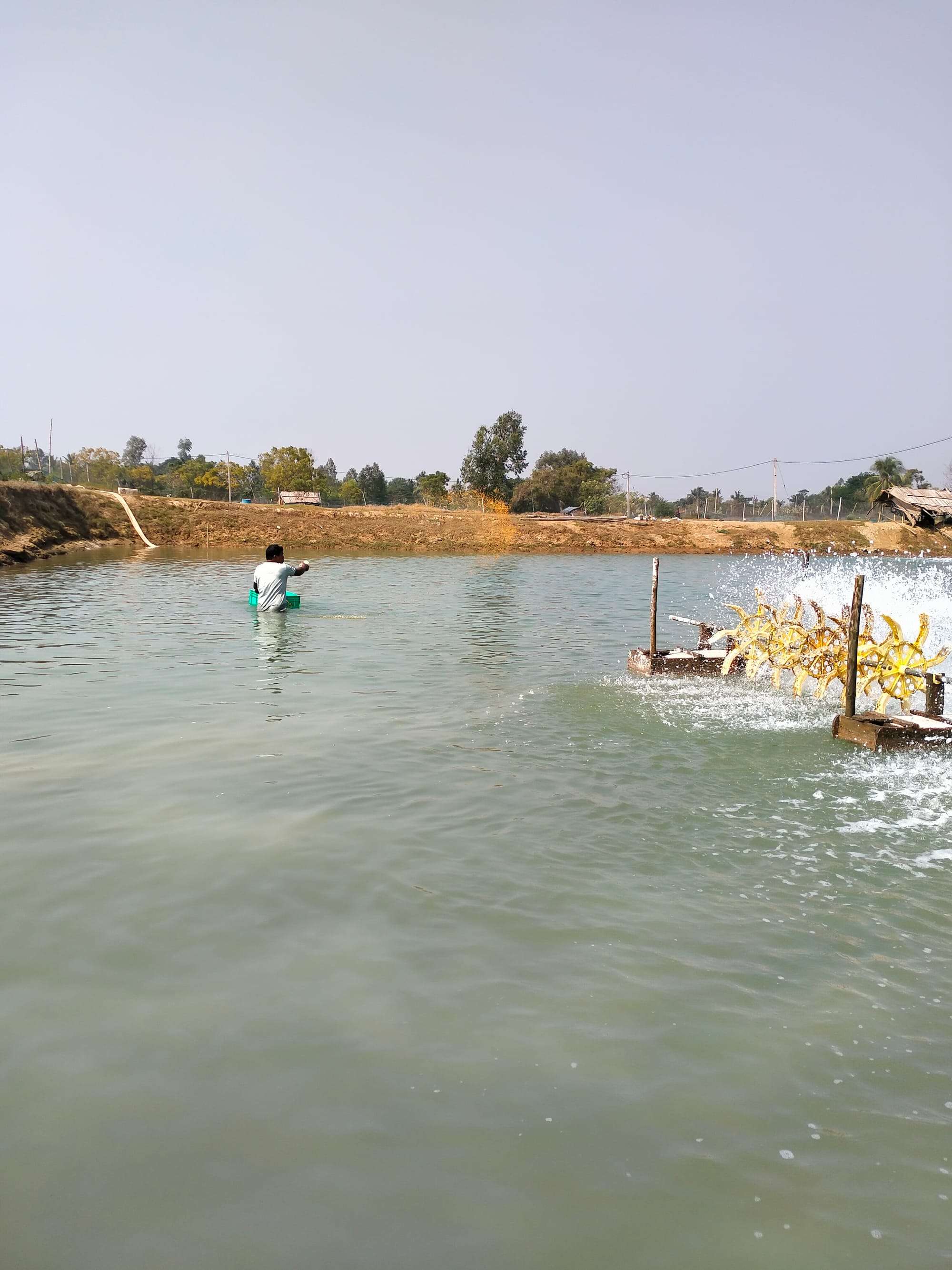#17 How shrimp moves: From an Indian farm to an American plate

By Siddharth Chakravarty
This is a two-part series written by Siddharth Chakravarty, a nerdy shrimp researcher, explaining the entire production line of the tiny, mighty farmed shrimp. This is part two, and a part of our overall ongoing series called The Story of Shrimp.
What we know so far is that the world mostly farms and eats shrimp that originates in the Gulf of Mexico. This shrimp makes its way to India, among other countries, where it is farmed. After processing, it goes back mainly to America where it is consumed. There are some main steps between this around the world chain which we’ll explore below.
Wild-caught to farm-gate
Mature shrimps are caught from the wild after which they are taken to labs. Here, scientists breed certain lines of shrimp with each other to produce a shrimp which has qualities that make it ideal for farming. Known as the broodstock, this adult shrimp will have certain disease resistance, or it could have a certain colour of the head, or it might not fight as viciously in crowded farms. This broodstock is then sent to facilities known as Broodstock Multiplication Centres where the idealised broodstock is reproduced, which hatcheries then use to reproduce generations of shrimp endowed with these chosen characteristics. From here, the new-born shrimp known as larvae which can be barely visible to the naked eye, are taken to a Nauplii Rearing Centre where they grow to a certain stage (post-larvae or PL stage). Usually between the 11th and 14th day of the PL stage, the baby shrimp, which are now the size of a fingernail, are supplied to farms. Until recently, India only engaged in the low value multiplication functions of the PL supply chain, where adult broodstocks were imported from certified suppliers around the world and supplied to hatcheries for producing PL. In recent years, aided by the amendment of regulations, India now has Broodstock Multiplication Centres for the exotic species. Meanwhile, government laboratories are also working to domesticate and genome sequence the Indian White Shrimp, a native white-legged species. In the recent budget of July 2024, a dedicated fund to enhance the quality of PL has been introduced.
On the farm
Farmers prepare their ponds before bringing shrimp from hatcheries to stock on the pond. Pond preparation begins by cleaning the waste sludge from the last crop and drying the bottom. After this, using a range of techniques, farmers will bring their pond environment and the water they put into it to the required PH and salinity levels and the removal of native organic matter that can induce disease in the shrimp. If the laboratory gives their water sample the all clear, they will instruct the hatchery they have an agreement with to supply the shrimp PL. Most farmers will demand from the hatchery PCR test results certifying the health of the shrimp before the supply. Once the PL arrive at the pond, they are kept in a contained area inside the pond, or if the farmer has multiple ponds, in a dedicated pond. For a few days, the farmer will observe the health of the shrimp, things like their appearance, movement, appetite and diet, and if all is satisfactory, then move them into the farming stage. Here, between a period of 90-120 days after stocking, the shrimp grow to be adults, and the farmer carries out the harvest. From being the size of a clipped nail when stocked they grow to roughly the size of a hoop earring during this period.

The farming process can be quite high risk and complicated. Most shrimp farms resemble a laboratory rather than a farm with a dedicated shed on each farm filled with a range of inputs, chemicals, medicines and additives that are vital to the health of the shrimp. Formulated feeds, which basically are designed pellet-shaped feed with a mix of soyabean, wheat, fish meal, fish oil and a range of minerals, are fed to the shrimp. Based on the age of the shrimp, the size and the composition formula of the feed pellets changes; these changes are to help with growth, resistance, strength, and moulting as needed in different ages of the shrimp. Shrimp feed accounts for usually 60% of the production costs of the farmer. The budget of July 2024, duties on feed ingredients have been slashed, with the attempt to reduce the price of feed. With the rise of shrimp production, one of the biggest industries that has grown alongside it is the formulated feed industry, which is concentrated primarily in Andhra Pradesh.
Off with its head
Once the harvest is complete, through a range of actors, the shrimps enter a processing chain that prepares it for exports. The domestic market for the farmed shrimp is almost negligible. Barring a few urban consumption centres and the disposition of undersized shrimp from failed farming processes in Bengal and Kerala, the overwhelming majority of the shrimp are exported. Here America makes up for more than half of the country's exports. There are many forms in which shrimp are processed — their head might be kept on or off, their shells might be removed, they might be deveined (basically the removal of their digestive tract), or they might be spruced up using a butterfly cut. Here too, the Head Less Shell On (HLSO) form is the largest form in which shrimp are exported to America.
From the farm, the shrimp are taken to processing units, which are both formal ones owned by big processing companies or by sub-contracted sheds in areas where labour is more easily available. Here, within the first twenty-four hours after harvesting their heads are taken off to stop the decomposition process, a task which is very laborious and requires a lot of skill. From here, the shrimp are washed, cleaned, sized and frozen into blocks. Until exports these are kept in cold storages and then taken onto refrigerated containers to be exported to ports in the United States.
A production line which started many generations ago with the catching of wild shrimp in the Americas is returned to consumers after a world tour through human-made environments in laboratories, farms and factories. Millions of shrimp, all bred to resemble each other, all fed on a diet to achieve uniform and fast growth, medicated to spend their lives swimming around in confined ponds, and spending their afterlife on ice to preserve their meat for a global consumer. Shrimp is truly a monoculture crop that signifies the absurdity and the sociology of the global capitalist food system.
Siddharth Chakravarty is currently a PhD student researching the business dynamics of India's seafood industry. He currently dabbles in research related to seafood production, both domestically and globally. Since 2010, he has been involved with a range of initiatives related to the seafood industry, including activism, community and labour organising initiatives. The journey with understanding farmed shrimp began with Debasis and Rabin, who have patiently allowed Siddharth to return to West Bengal and spend hours around shrimp farms. Their unions are a foremost source of inspiration.
Recommended Reads
- The Shrimp Insights blog: https://www.shrimpinsights.com/shrimp-blog
- Corporate Accountability Lab's Labour report: https://corpaccountabilitylab.org/hidden-harvest
- National Platform for Small Scale Fish Workers: smallscalefishworkers.org/
